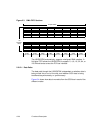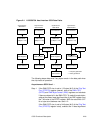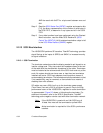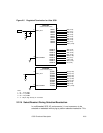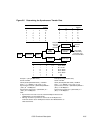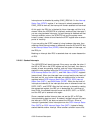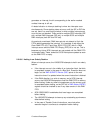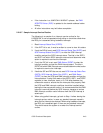2-36 Functional Description
2.2.15.2 SCSI Control Three (SCNTL3) Register, Bits [6:4] (SCF[2:0])
The SCF[2:0] bits select the factor by which the frequency of SCLK is
divided before being presented to the synchronous SCSI control logic.
The output from this divider controls the rate at which data can be
received; this rate must not exceed 160 MHz. The receive rate of
synchronous SCSI data is one-fourth of the SCF divider output. For
example, if SCLK is 80 MHz and the SCF value is set to divide by one,
then the maximum rate at which data can be received is 20 MHz
(80/(1*4) = 20).
2.2.15.3 SCSI Control Three (SCNTL3) Register, Bits [2:0] (CCF[2:0])
The CCF[2:0] bits select the factor by which the frequency of SCLK is
divided before being presented to the asynchronous SCSI core logic.
This divider must be set according to the input clock frequency in the
table.
2.2.15.4 SCSI Transfer (SXFER) Register, Bits [7:5] (TP[2:0])
The TP[2:0] divider bits determine the SCSI synchronous transfer period
when sending synchronous SCSI data in either the initiator or target
mode. This value further divides the output from the SCF divider.
2.2.15.5 Ultra SCSI Synchronous Data Transfers
Ultra SCSI is an extension of the current Fast SCSI-2 synchronous
transfer specifications. It allows synchronous transfer periods to be
negotiated down as low as 50 ns, which is half the 100 ns period allowed
under Fast SCSI-2. This allows a maximum transfer rate of 40 Mbytes/s
on a 16-bit SCSI bus. The LSI53C875A has a SCSI clock quadrupler that
must be enabled for the chip to perform Ultra SCSI transfers with a 20
or 40 MHz oscillator. In addition, the following bit values affect the chip’s
ability to support Ultra SCSI synchronous transfer rates:
• Clock Conversion Factor bits, SCSI Control Three (SCNTL3) register
bits [2:0] and Synchronous Clock Conversion Factor bits, SCNTL3
register bits [6:4]. These fields support a value of 111 (binary),
allowing the 160 MHz SCLK frequency to be divided by 8 for the
asynchronous logic.



